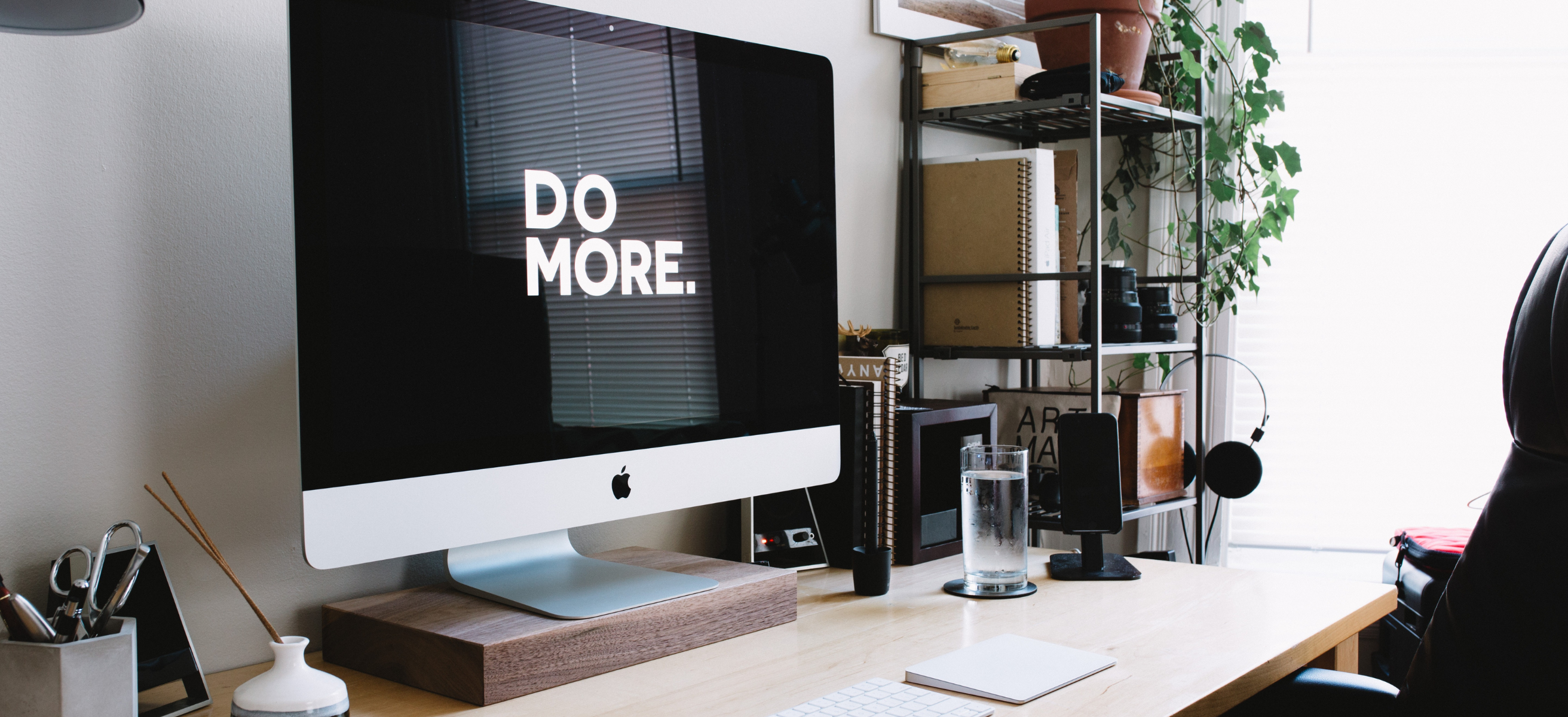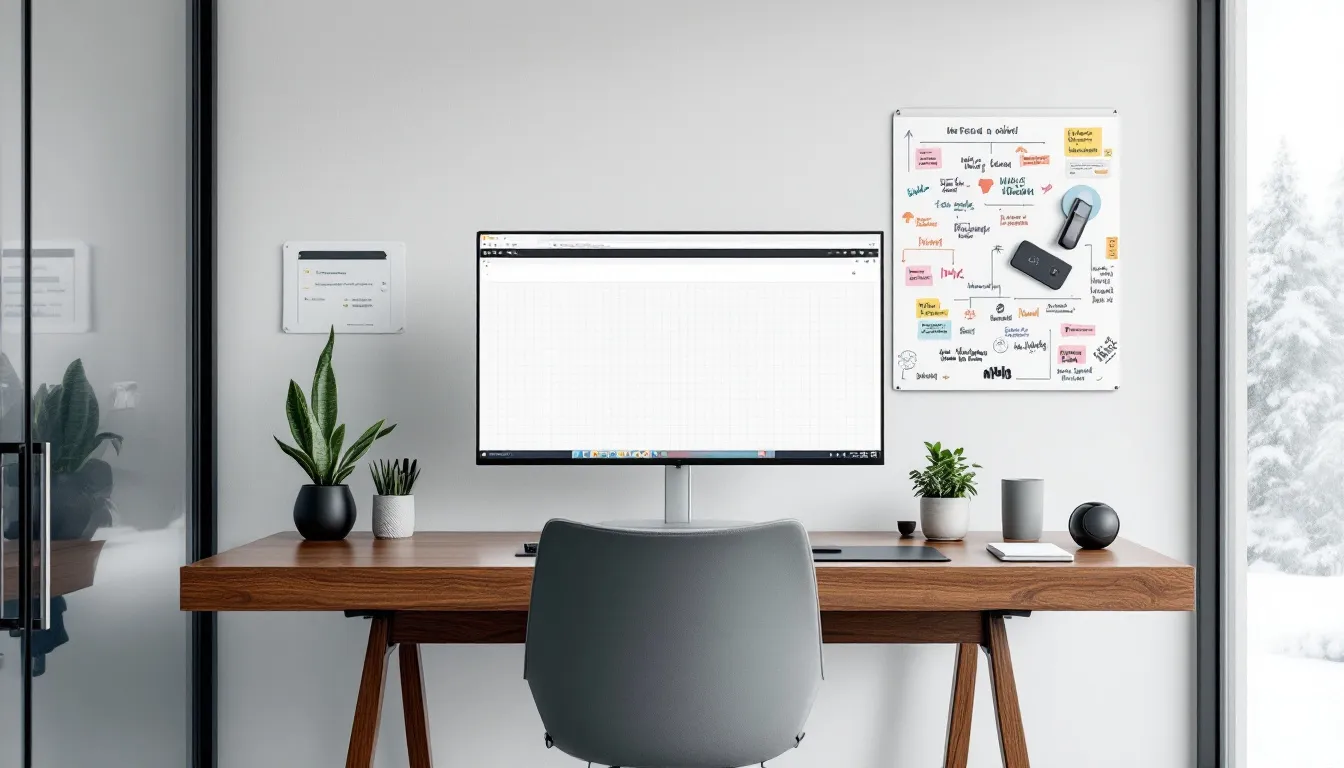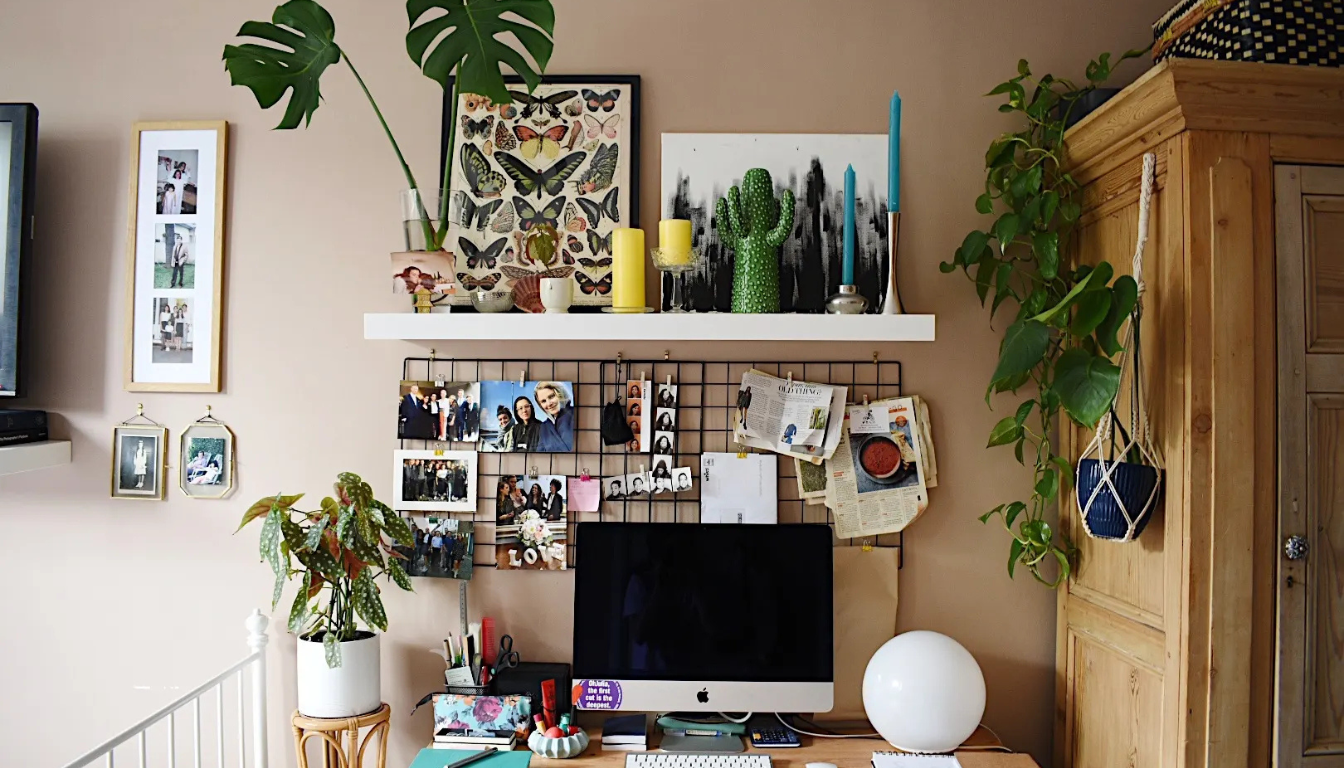Top Tips for Working Remotely: How To Stay Productive and Balanced

Trying to figure out working remotely how to do it effectively? You’ve found the right place. This guide provides practical steps to set up your workspace, establish routines, and manage distractions. Learn how to stay productive and balanced while working from home.
Key Takeaways
- Establish a dedicated workspace to enhance focus and productivity, minimizing interruptions between professional and personal life.
- Create a consistent routine and define work hours to manage time effectively and maintain a healthy work-life balance.
- Utilize technology and collaboration tools to enhance connectivity and productivity, while also managing distractions and prioritizing self-care.
Create a Dedicated Workspace

Creating a dedicated work space is crucial for remote work success. This isn’t just about having a place to sit; it’s about establishing an environment that fosters focus and productivity. A dedicated work space can significantly reduce interruptions and create a clear boundary between your professional and personal life. If possible, designate a specific room for work to enhance your focus and productivity. Natural light can improve your mood and energy levels, while a decluttered space helps maintain mental clarity.
Creating this specialized area is about more than just functionality. It sets a mental cue that it’s time to work, helping you transition into a professional mindset each day. An idea for a dedicated work area reduces distractions and interruptions, enhancing overall efficiency and productivity.
Optimize for Comfort and Productivity
Focus on making your workspace both comfortable and productive in your office environment. Incorporate ergonomic furniture to reduce physical strain and enhance comfort during long work hours. An ergonomic chair, a desk at the correct height, and a computer setup that prevents strain are all essential components. Comfort directly impacts productivity, so invest in an ergonomic office setup to maintain focus.
Additionally, good lighting and easy access to necessary tools can further enhance your workspace. Position your desk near a window to benefit from natural light, which can boost your mood and energy levels. Keep your workspace organized and clutter-free, with all the tools you need within arm’s reach. This setup not only creates a more efficient work environment but also supports a more productive and enjoyable workday.
Use Technology Wisely
Wisely using technology can significantly enhance your remote working experience. A reliable home internet connection is crucial for seamless communication and uninterrupted productivity. A strong and stable Wi-Fi connection can help avoid frustrating disruptions. Additionally, consider using a virtual private network (VPN) to secure your internet connection and protect sensitive information while working remotely. Here are some remote work tips to improve your setup.
Use technology tools to stay connected and productive. Use project management software to keep track of tasks and deadlines, and video conferencing tools like Zoom to maintain face-to-face communication with your team. These tools not only help you stay organized but also enhance collaboration and communication, ensuring that important work progresses smoothly even when you’re working remotely.
Establish a Routine

A consistent routine is vital for remote work success. A consistent schedule helps manage your time effectively and signals to your family when you’re available and when you’re not. Striking a balance between flexibility and structure is key to enhancing productivity in a remote job setting. A structured approach helps you stay productive while enjoying the flexibility of remote work.
Creating a routine not only helps in managing work tasks but also supports self-care practices, reducing the risk of burnout. Setting clear work hours and planning your day can help you maintain a healthy work-life balance.
Define Your Work Hours
Clearly defined work hours are essential for maintaining productivity and a work-life balance. Setting specific work hours allows you to align your schedule with your peak productivity times, improving overall performance during certain hours. Many employers offer flexibility in work hours, enabling you to tailor your schedule based on your personal productivity rhythms. Identifying these peak times can significantly enhance your efficiency while working remotely during work time.
Communicate your work hours to your family and set expectations about your availability during these times. This minimizes interruptions and helps you focus on important tasks. By sticking to your defined work hours, you create a clear boundary between your professional and personal life, supporting a healthier work-life balance.
Plan Your Day
Effective day planning can significantly boost your productivity. Start by breaking down tasks into smaller segments, which can help you maintain sustained focus and manage your workload more effectively. A daily task list with allocated time frames enhances organization and efficiency. This structured approach ensures that important tasks are completed on time.
Regular breaks enhance concentration and prevent burnout. Scheduled breaks help refresh your mind during your lunch break, leading to improved focus and productivity during work tasks.
Using digital tools to set reminders and manage deadlines can also aid in organizing your day and ensuring that you stay on track with your work.
Set Boundaries Between Work and Home Life

Setting clear boundaries between work and home life is essential for a healthy work-life balance. Having a designated work area enhances focus and creates a clear boundary between professional and personal life. Adhering to specific work hours can reduce stress and improve time management. Establishing these boundaries helps you balance personal life and professional obligations, which is a significant concern for many remote workers.
Resist the urge to be available 24/7, and clearly communicate your work hours and availability to your team and family. This helps manage expectations and ensures that you have time for personal activities and self-care. By setting clear boundaries, you can maintain a healthier and more productive work environment.
Communicate Ground Rules
Setting ground rules with your family members reduces distractions during work hours. Set clear expectations about your work schedule and the importance of minimizing interruptions. This helps create a more focused and productive work environment, allowing you to start work on track with your tasks and responsibilities.
End Your Workday Properly
Ending your workday properly helps maintain a healthy work-life balance. Acknowledge that there is always more to do, but it’s important to decide when to stop as the day ends. A consistent end time for your workday creates a clear boundary between work and personal life. This helps you prioritize personal time and avoid burnout.
To signal the end of your workday, sign out of work-related communication tools like Slack and email, and close your computer. This ritual helps you transition from work mode to personal time, allowing you to refresh and enjoy your life after work, rather than feeling lost in your responsibilities.
Establishing this routine supports a healthier work-life balance and enhances overall body well-being, of course.
Stay Connected with Your Team

Team connectivity is crucial for remote work success. Utilizing various communication methods, including phone calls, enhances team collaboration and prevents misunderstandings. Regular check-ins and meetings help maintain a sense of connection among team members, fostering accountability and ensuring everyone is aligned on goals.
Employing productivity tools like project management software can streamline tasks and improve collaboration among remote teams. Incorporating structure into remote work not only alleviates feelings of isolation but also enhances team cohesion, work connections, and overall productivity.
Regular Check-ins
Regular check-ins keep team members connected in a remote work environment. Creating a consistent schedule for these check-ins helps maintain focus and ensure that everyone is aligned on goals and deadlines. This routine fosters accountability and supports effective collaboration among remote workers.
Use Collaboration Tools
Using collaboration tools enhances teamwork and communication in a remote work environment. Tools like Slack for messaging and Zoom for video calls are essential for maintaining clear communication among virtual team members. Regularly utilizing these tools not only keeps teams connected but also fosters a sense of community and teamwork.
For instance, integrating tools like Zapier with Slack can automate reminders for tasks, helping teams stay on track and enhancing overall productivity. These tools streamline communication and collaboration, making it easier for remote teams to work efficiently and effectively. An example of this is how automated reminders can significantly improve task management.
Manage Distractions
Managing distractions is crucial for remote work. An office in a quiet home area helps minimize distractions and enhance productivity. A well-defined routine significantly improves focus and productivity. Common distractions like TV, gaming consoles, and household chores can be managed by strengthening willpower and creating a structured work environment.
Managing and avoiding distractions is crucial for remote workers. Apps like RescueTime, Freedom, and FocusBooster can help manage online distractions, ensuring that you stay focused on your priorities. By creating a distraction-free zone and using tools to manage distractions, you can maintain a productive and efficient workday.
Create a Distraction-Free Zone
A distraction-free zone is essential for maintaining focus while working remotely. Set up your workspace in a quiet area and consider using noise-canceling headphones to block out ambient noise.
Incorporating plants into your workspace can also enhance focus and reduce stress, creating a more productive work environment.
Practice Productive Procrastination
Productive procrastination involves activities that give a mental break without detracting from work focus. Techniques such as taking power naps, meditating, doing yoga, and journaling can help refresh your mind, improve creativity, and enhance overall productivity. These activities offer a way to rest and rejuvenate without completely stepping away from a productive mindset.
Incorporating these practices into your remote work routine allows you to maintain focus while also supporting your mental well-being. By taking these intentional breaks, you can return to your work with renewed energy and a clearer mind, ultimately boosting your overall productivity and job satisfaction.
Prioritize Self-Care

Self-care is essential for maintaining a healthy work-life balance while working remotely. Establishing boundaries at work is crucial for protecting mental health and preventing burnout. Maintaining physical and mental health helps remote workers avoid fatigue and stress, which supports long-term productivity. Self-care practices enhance mental clarity and overall well-being, making it easier to stay focused and productive.
Engaging in brief physical activities and taking regular breaks can boost energy levels and productivity when working from home. Dressing well while working remotely can significantly enhance your mindset and boost productivity. By taking care of yourself, you ensure that you are in the best possible state to perform your job effectively.
Take Regular Breaks
Regular breaks throughout the workday are vital for maintaining productivity and mental well-being. During these breaks, it is important to be fully present and relax to reap their benefits. Short bursts of physical activity improve mood and cognitive function for remote workers.
By taking regular breaks, you can maintain a higher level of focus and productivity throughout the day by taking time.
Stay Active
Staying active is crucial for maintaining physical and mental well-being while working remotely. Remote workers should aim for at least 20 minutes of exercise a day to maintain their health. Incorporating exercise into your daily routine can significantly improve both energy levels and focus. Regular breaks can also enhance focus, boost employee engagement, and prevent burnout among remote workers.
Take advantage of natural light by setting up your workspace near a window in the morning, and consider taking a walk during your breaks to get some fresh air and sunlight. This simple practice can improve your mood and energy levels, making it easier to stay productive throughout the day. Following this advice can enhance your overall work experience.
Prioritizing physical activity is a key component of a balanced and healthy remote work routine.
Dress for Success
Dressing for success, even remotely, significantly impacts your mental outlook and work performance. Dressing professionally at home signals to yourself and others that you are ready to take on the day, enhancing your confidence and preparedness for daily tasks. Avoiding pajamas and opting for comfortable yet appropriate attire can help maintain professionalism during video meetings.
Regular grooming reflects self-respect and attention to detail. Investing in quality basics offers both durability and versatility, making it easier to maintain a polished look. By dressing well, you create a professional mindset that supports productivity and success in your remote work environment.
Maintain a Professional Appearance
Taking care of your appearance as a person is important for remote work as it shows respect to yourself and enhances feelings of professionalism. Dressing professionally, even from home, can boost your confidence and readiness for the day.
Layering clothing can provide versatility and allow for quick adjustments between casual and formal attire. This approach ensures that you are always prepared for any situation that arises during your workday.
Be Your Own Tech Support
Being your own tech support is essential for remote workers. Remote employees must manage their own technical issues, often without immediate IT support. Troubleshooting basic tech issues minimizes downtime and ensures productivity. Automating software updates can help ensure that you are using the latest security features, reducing the risk of system crashes and other technical glitches.
Planning for technical issues, like internet outages, is crucial for maintaining productivity. By having a backup plan and being prepared to handle technical problems independently, you can avoid disruptions and stay focused on your work.
Prepare for Technical Issues
It’s important for remote workers to create a contingency plan for potential technical failures. This plan should include steps for addressing various connectivity problems and having mobile hotspots as a backup to ensure connectivity during internet disruptions.
By preparing for these issues in advance, you can maintain productivity and avoid delays in your work.
Keep Software Updated
Regular software updates are essential for a smooth remote work experience. Automating software updates can help remote workers maintain their devices’ performance without manual intervention. Outdated software can cause system crashes and disrupt remote work.
By keeping your software updated, you ensure that your devices run efficiently and securely.
Balance Flexibility and Structure
Balancing flexibility and structure is key to thriving while you work remotely. Enjoying the flexibility of remote work requires adaptability and the ability to troubleshoot basic tech issues independently to minimize downtime. Establishing a backup plan will help you handle technical issues like power outages or connection problems effectively.
Balancing flexibility and structure enhances productivity and work-life balance. Experimenting with different schedules and sticking to deadlines ensures that you remain efficient and organized while enjoying the benefits of remote work.
Experiment with Schedules
Experimenting with different routines and working hours helps you find what works best. Determine your peak productivity times by experimenting with different routines and hours. It is acceptable to have different working hours on different days, allowing for a schedule that adapts to your needs.
Allowing team members to choose work hours fosters schedule diversity and boosts morale. By finding the schedule that works best for you, you can maximize your productivity and satisfaction with your remote work routine.
Stick to Deadlines
Sticking to deadlines is crucial for maintaining productivity and meeting your goals. Tools and reminders help you stay focused and meet deadlines. Break down tasks into manageable chunks and schedule regular breaks to stay focused and productive.
Leverage tools like Slack, Zoom, and project management software to enhance teamwork and communication. By utilizing these strategies, you can maintain structure in your work and efficiently meet deadlines.
Summary
Mastering remote work requires a combination of structured routines, effective communication, and self-care practices. By creating a dedicated workspace, establishing a routine, setting boundaries, staying connected with your team, managing distractions, prioritizing self-care, dressing for success, being your own tech support, and balancing flexibility with structure, you can enhance your productivity and work-life balance.
Implementing these strategies will help you navigate the challenges of remote work and enjoy its many benefits. Stay proactive, adaptable, and mindful of your well-being to thrive in your remote work environment. Embrace these tips and watch your remote work experience transform into a productive and fulfilling journey. Utilizing platforms like Offsite can further enhance this experience by facilitating intentional team engagement and connection, which are critical components of a successful and sustainable remote work model.
FAQs
- What is a good way to start a remote work routine?
A good way to start a remote work routine is to create a dedicated workspace and establish clear work hours. Incorporating regular breaks and self-care practices will help you maintain productivity and work-life balance.
- How can I create a productive workspace at home?
Creating a productive workspace at home involves establishing a dedicated area that minimizes distractions, using ergonomic furniture, ensuring proper lighting, and maintaining organization. Additionally, incorporating plants can help enhance focus and reduce stress.
- What are some tips for staying connected with a remote team?
To effectively stay connected with your remote team, utilize communication tools like Slack and Zoom, schedule regular check-ins, and employ project management software for task management. Being proactive in your communication will foster better collaboration.
- How can I manage distractions while working from home?
To manage distractions while working from home, establish a dedicated workspace in a quiet area and consider using noise-canceling headphones. Additionally, utilize apps like RescueTime and Freedom to limit online distractions effectively.
You may also like
Unique spaces for your next offsite
Find distinctive venues for your upcoming corporate retreat.
Stay Updated with Our Insights
Get exclusive content and valuable updates directly to you.







